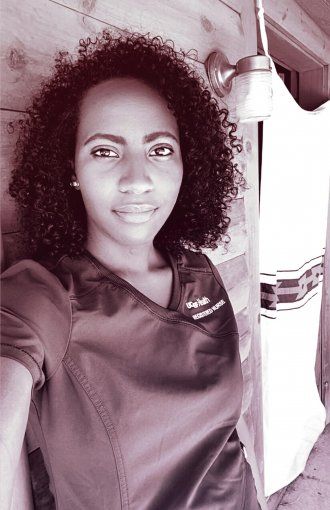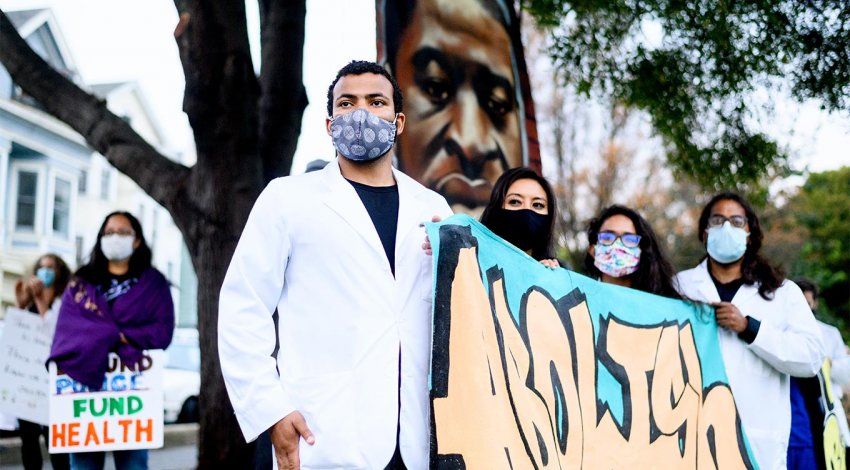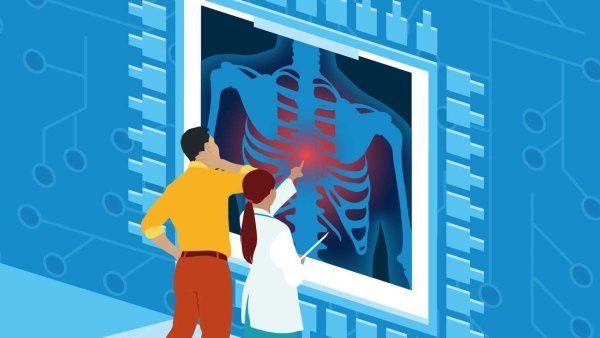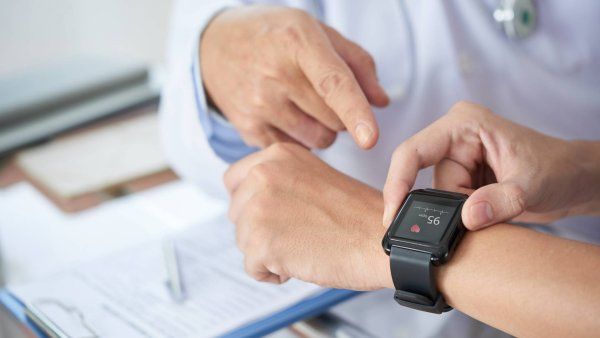Lending a Hand in the Navajo Nation
Working in a virus hot spot teaches surgical nurse Alicia Catanese about another culture – and herself.

Alicia Catanese, captured via FaceTime at the Gallup Indian Medical Center in New Mexico on June 10 at 1:15 p.m. by photographer Steve Babuljak
The small city of Gallup has only 3% of New Mexico’s population but, as of May 2020, nearly a third of the state’s COVID-19 cases. Alicia Catanese, RN, a surgical charge nurse, joined a UCSF Medical Center team to help the Gallup Indian Medical Center cope with its COVID surge. The facility serves the nearby Navajo Nation reservation.
The UCSF delegation – five nurses and three doctors – assisted the hospital’s Emergency Department (ED), even though only one person on the team worked in the ED at UCSF. “At the beginning, what the medical staff needed the most was more manpower,” Catanese says. “We had to adapt to our new surroundings and learn quickly.” She talked with us about the experience while she was still in Gallup.
What is the situation like there?
From the time we arrived, we have been going, going, going. That really shows you what kind of clinician you are, but there’s also an understanding of the big picture: that we’re here to help and to serve this community. That was the driving force behind our coming here.
How is it different from working at UCSF?
The ER here is very different from any ER I’ve been to or experienced as a nurse. I’ve always been at hospitals where, whether it’s in an underserved community or a more affluent community, there have always been resources to help.
This is a very small, community-based hospital. They don’t have the resources that we have, so they have to send out a lot of their more critical patients to Albuquerque or Phoenix, to larger hospitals.
At UCSF we’re one of the top hospitals, so we usually receive a lot of patients. Being on the receiving side is very different from sending people out. When we don’t have something we need, I’m like, “Oh no, we don’t have that!”
But the local staff knows the flow. They’re so incredibly skilled. They know exactly what the patients need and when we just can’t offer it here.
While in New Mexico, Alicia Catanese spoke about her experience serving the Navajo Nation. Her presentation was part of UCSF Alumni Week, a virtual event held this June.
What else is different?
You’re catering to a different community, learning what that means.
Part of that was learning how they deal with death. They have a four-day process to complete burial ceremonies. They believe after four days their spirit has left the body.
It really puts things into perspective when we send people to Albuquerque. If the patient doesn’t make it, the family has to travel there to receive the body. If it’s not within the four days, then that really shatters their coping process. Knowing that furthered my empathy.
The Navajo Nation has been a COVID-19 hot spot. What’s the protocol when people come to the ER?
The first two weeks, we were just testing, testing, testing. Some people would be asymptomatic but had possible exposure from family members. We were giving everyone a mask to go home with. If they were symptomatic, we would send them to a nearby hotel or motel to self-quarantine.
A lot of people came in with homemade masks, which was great. I always encouraged them to trade out between two or three masks, and wash them in between, because it doesn’t help if you’re wearing the same mask over and over again and you’re not keeping it clean.
What’s the clinical set-up?
Just two weeks ago, they converted another hospital wing to a COVID-positive floor. And now they have a space for patients who may just need oxygen or may need to be monitored for a couple days: They converted the high school gymnasium into an alternative care facility that the New Mexico National Guard is facilitating.
Earlier, you said that being in this situation really shows you what type of clinician you are. What did you mean?
When COVID-19 broke out, people made lots of comments about nurses or health care providers who weren’t given proper PPE. Parts of the outside community were saying, “Well, they’re health care providers” – like “That’s what they signed up for.”
No. We signed up to take care of people and to be fully present, but we also are entitled to protect ourselves while we’re protecting our patients.
There wasn’t a question of me not signing up to come help here, because it’s aligned with who I am. It’s not aligned with everyone, but I don’t mark them as a poor clinician because of it. There are things that they would do that I wouldn’t do.
In the midst of all this chaos and tragedy, some seem to be retreating and pulling back, and I think that’s just human nature. But me, I’ve always said, “Oh, there’s a problem ...”
... you go toward it.
I always go toward it. Being around like-minded providers is very nourishing.
They’re very respectful and honoring of their elders. That’s the driving force for a lot of the younger generation ... It’s a human trait that we all have, but it’s so integrated into their culture that it’s second nature.”
What have you learned about the community that you’re serving?
They have a lot of pride in themselves and in their community for being the original people here. It helps me understand their history a little better. Just sitting with them and listening to their stories helps me understand a lot of the disparity and tragedy that they’ve had to endure over the years.
They’re very respectful and honoring of their elders. That’s the driving force for a lot of the younger generation. They’re like, “I will self-isolate because I don’t want to get Grandma and Grandpa sick.”
It’s a human trait that we all have, but it’s so integrated into their culture that it’s second nature.
Any other lessons you’ve learned?
I love this. I love being here. I really do. It’s been such a joy and an honor, in this really crazy, tragic time, to still be able to serve and love people really well. This is why I became a nurse. This is why I do what I do.
I always tell my patients, “I feel like I’m learning so much more here with you in this space than maybe I’m giving to you.” They tell me, “No, no, no. You’re giving. You’re giving everything.” It’s a very two-way, shared relationship. It’s … inspiring.

More from this Series
Custodian Abie Stillman shares his reflections on essential work and what he would like instead of another thank-you.




